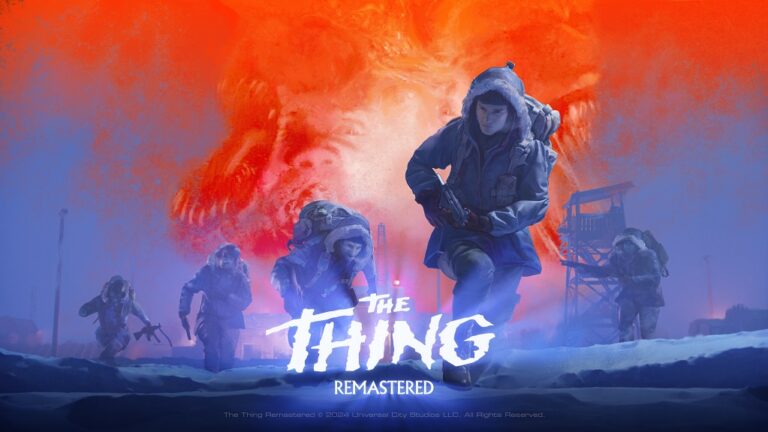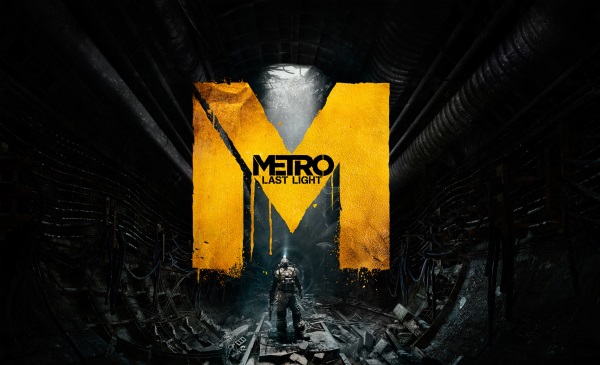
The term “cult classic” gets thrown around very ham-fistedly, and is often attached to titles that are far from cult status. Metro 2033, on the other hand, garnered a fairly small, but very enthusiastic fan base, thus was deserving of such a label. It was a game that used very intricate environmental detail to push its atmosphere to the forefront of the player’s attention, which helped us really connect with the world 4A Games created. The story resonated long after the final bomb fell on our enemy’s doorstep, due in part to the piercing darkness engulfing the lonely corridors of the Metro. Now, it’s time to see if the follow up, Metro: Last Light, can carry on the legacy left behind by its predecessor. Does it stand out amongst the never ending horde of its first person shooter contemporaries or does it find itself stuck in the radioactive wastes, writhing in pain while gasping for air? Good thing for us, this survivor always packs a spare gas mask before heading out onto the surface.
If you’re at all worried about whether or not you should play Metro 2033 before picking up Metro: Last Light, worry not, there’s a recap of the events of the first game when you start a new campaign in Last Light thus making it fairly easy for newcomers to jump into the story. Although, I’d still recommend playing Metro 2033 first as many of the finer details of plot will make much more sense. For the sake of this review, we’re going to assume you’ve played Metro 2033, as it’s impossible to discuss the plot of Last Light without slightly spoiling the events of the first game.
The Metro series is set in an extremely grim post-apocalyptic Earth that’s been carpeted in nuclear fallout. The surface of the planet is now an uninhabitable wasteland filled with mutated creatures, enormous hurricane level winds, and mass radiation sprinkled throughout the land. The survivors of this nuclear holocaust now live in the Moscow Metro, an enormous underground air-raid shelter that now serves as humanities final refuge. Now, while Metro 2033 was an adaptation of the Russian novel of the same name, Metro: Last Light is a completely original story set within that universe. This game is once again seen through the eyes of Artyom, the young Ranger that braved the darkest depths of the Metro subsystem to thwart the sentient telepathic Dark Ones from threatening the residents of his home station of Polis.
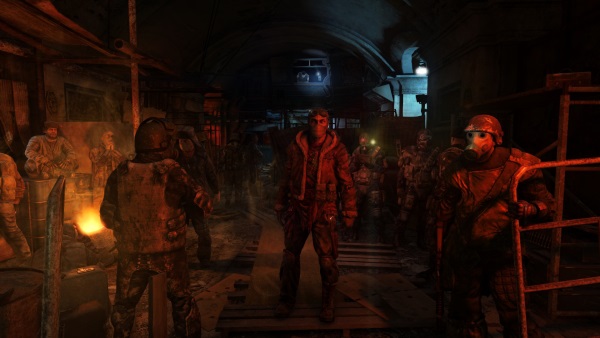
The people of the Metro are scattered and divided into several prominent factions, all on the brink of war with each other. There’s the Red Line, a communist party hell bent on being the totalitarian police force of the entire Metro. The Fourth Reich, a fascist group of Nazis that want nothing more than to protect racial purity by killing anyone that’s been even slightly mutated by radiation, and Hanza, the capitalist group of traders that act as somewhat of a commonwealth for the Metro’s people. Finally, The Order of Rangers, a neutral organization of elite warriors poised at helping Metro settlements with Bandit and mutant troubles.
Since the events of Metro 2033, Artyom is now considered one of The Order’s finest Rangers and a bastion of hope for many people in the Metro ever since he vanquished the Dark Ones. Artyom, however, does not share in this mentality, questioning himself about whether or not he did the right thing in assaulting the Dark Ones, even if his intentions were to protect his home station of Polis. This makes Metro: Last Light a far more personal story than that of the first game, as our supposed hero is wracked with guilt over committing genocide of a sentient species. This is not helped by the notion that maybe the Dark Ones may have not been a threat at all, and that Artyom’s actions in the previous game may have just doomed the remnants of humanity. Tensions are higher than ever in the Metro, and now that the Dark Ones are gone, every faction now points their weapons at each other. Humanity can’t afford a final great war, as it’ll result in what little human life remains being lost to the conflict. The only hope to preventing this war now lies with a young Dark One that survived the bombing in the first game, and it’s up to Artyom and the rest of The Order to make sure this child survives.
Where Metro 2033 was more a means to set up the world, Metro: Last Light is a tale of redemption for Artyom. Ultimately, I’d say the plot and story in Metro: Last Light are thoroughly engaging, though certainly not without their faults. Artyom himself is a mute protagonist during game play and it’s a little detrimental to the overall experience. He’s not really like Half-Life’s Gordon Freeman in that he’s the link between the player and the game world; Artyom is a character with a personality. Sure, you read his notes and hear him monologue his journey throughout the game during loading screens, but it would’ve been interesting to actually see and hear his reaction to events while the player was in control. Another fault of the writing is several key figures in the game are not given ample screen time to develop properly. A few important members of the supporting cast are introduced briefly in the beginning of the game are not seen again till nearly the finale, which creates a lot of forced relationships between the characters that never really feels legitimate.
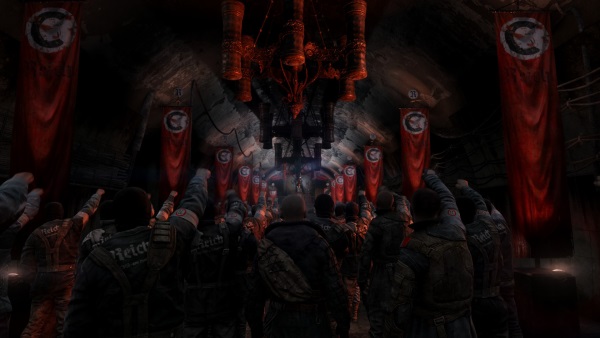
Despite Metro: Last Light being far more of a character piece than the first game, it by no means lessens of the emphasis 4A Games put into engulfing the player in their irradiated world through visuals. The narrative and environments play off of and only serve to strengthen each other, after all; the more tangible the world is, the more we can connect with the characters inhabiting and living in it. In this regard, Metro: Last Light stands amidst the very best in the gaming industry. Every single environment is brimming with an immense amount of detail. The Metro stations themselves, the hubs of all the people living in the Metro are as cramped as they are bustling. People have makeshift huts barely held up by random scarps of assorted material as their only means of privacy. There’s only just enough room in a station for people to walk around without bumping into each other constantly, so it’s safe to say these substations are incredibly claustrophobic.
However it’s in these cramped civilian gatherings where you’re interacting with people that some of the most interesting parts of the game shine through. In such an instance, I came across a man that was entertaining a group of small children by doing shadow puppets. He would mimic various animals like, say a bird, and all the children thought it was supposed to be one of the flying mutants. He then went on to explain what a bird was, as none of the children would’ve ever seen one due to all having been born long after the nuclear holocaust made the surface uninhabitable to most forms of life. It was humorous to see the children joking around about trying to guess what sort of mutant was projected on the canvas, but it was also quite harrowing. It was a stark reminder as to what the world has become: A dead, vapid, and poisoned well where something like a bird is a fleeting memory.
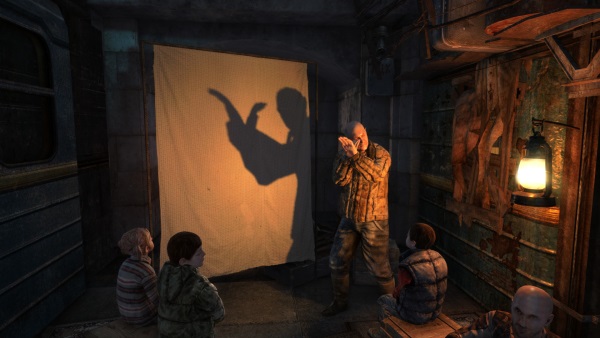
My only real complaint with these sections of the game is, often, there’s a lot of overlap with the spoken dialog. You can be standing beside one NPC as he tells you his troubles trying to catch fish with low levels of radiation, while another NPC is begging you help him with his financial woes. Like I already said, listening to these troubled souls are some of the best parts of the game, so when you have multiple NPC’s trying to speak to you, it can be a bit frustrating. It’s a hard thing to avoid too because of how little floor space there is to move around.
Harrowing is probably the best way to describe the game as a whole, it’s an experience through varying shades of darkness. No matter how depressing a tale you may hear in the stations, they all pale in comparison to what you’ll actually witness in the dark, lonely tunnels of the Metro. With mutants lurking about, bandits pillaging settlements, Nazi’s measuring people’s skulls to ensuring there are no physical abnormalities, and ghostly apparitions serving as a reminder of the old world. The Metro is one of the most oppressive places ever to be featured in the medium, or at the very least in the first person shooting genre. When you aren’t fending off one of the aforementioned terrors, you’ll be dragged into the memories of the old, long dead inhabitants of Moscow as the bombs fell. These sequences are rare, but they can be downright chilling when you do come across one. In one instance while wandering through a crashed airliner, I was sucked into the final moments of the plane as it came crashing down in the center of Moscow. Hearing the faint screams of passengers while watching the captain and his co-pilot radio for help as the city is engulfed in fire.
None of these sequences, though, would be nearly as effective if it weren’t for the amazing engine 4A Games has created. From a technical standpoint, there are few games that can boast lighting and shadow effects as impressive as this; it only helps bring out the best in the art direction. Many of the transitions between real world and sanity effects are really dynamic and often happen without any sort of obvious masked loading. Equally impressive is the sound design, especially in surround sound, it’s really useful when trying to pinpoint the location of creatures lurking in the darkness.
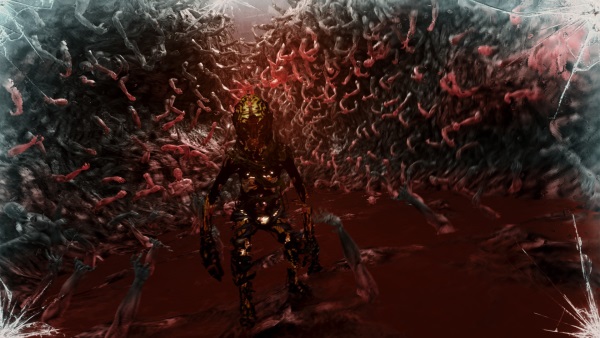
Now, while Metro: Last Light is undoubtedly a shooter, much of its design resembles classic survival horror more than anything else. Many supplies are not only scarce, but the pre-apocalypse ammo also serves as your only form of currency. You’ll find yourself debating if you should use the more effective pre-apocalypse ammo to take down a large beast quicker than standard ammo in hopes of not having to use a med pack, but also at the expense of using up your literal currency. In order to upgrade, customize or purchase new weapons, you need to exchange your pre-apocalypse ammo, so it’s usually best to stick to just using the standard ammunition. You can also only carry 3 different firearms at any given time.
It should also be noted that there is no regenerating health in Metro: Last Light, traditional health packs are just one of the items you’ll find yourself spending much of your time searching for. Even your flashlight needs to be used somewhat sparingly; your flashlight will need to be charged manually after extended use. There are also segments where you’ll be visiting the surface, where a gas mask is needed, should you wish to not end up drunk off the abundance of radiation and poisonous air. The gas mask needs to have its filter changed every 5 minutes too; you can’t just strap on a mask and call it a day, it requires some degree of item management. Furthermore, the gas masks have limited durability; get beat up, and the glass will begin to crack and fracture. Your vision can also be obscured by various things like rain, steam from heavy breathing, and blood from your adversaries. This may sound annoying, but you have wipe away whatever is caked on the glass with Artyom’s hand, it’s strangely satisfying for some reason too.
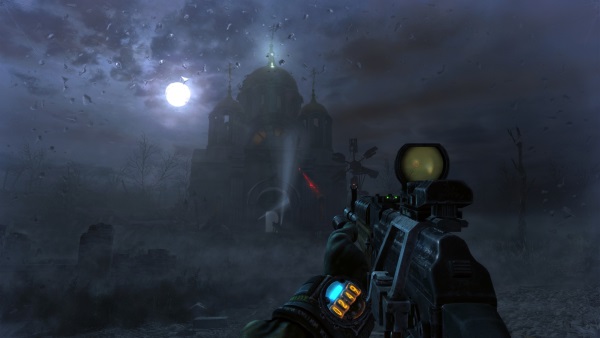
Its survival elements like this that really adds to the tension of Metro: Last Light, as every dark crypt and surface excursion is sure to make some feel overwrought. The only thing really lacking in the survival department is the game’s overall difficulty; it’s a fairly easy game. Largely because many of the aforementioned supplies are spewed out in bulk, making a lot of the tension dissipate quickly. I’d recommend playing the game on the hardest available difficulty from the get-go for the best experience.
Typically, there are two kinds of enemy engagements in Metro: Last Light; mutant encounters, and human encounters. Combating with the many different kinds of mutants varies quite a bit depending entirely on what type of mutant you’re fighting. There are large armoured arachnids that scurry about in the darkness; the most effective means of fighting them off is to shine your flashlight on them, as they’re afraid of the light. While they’re halting in fear, you can unload some rounds on their unprotected underbellies. There are also pack hunting wolf-like creatures, winded demons similar in appearance to gargoyles that try to fly off with you, and large predatory mole creatures that attack from all angles in caves. There’s a unique quality to fighting the mutants, as they don’t really feel like typical beast enemies you’d see in a first person shooter. They honestly feel and behave like wild animals.
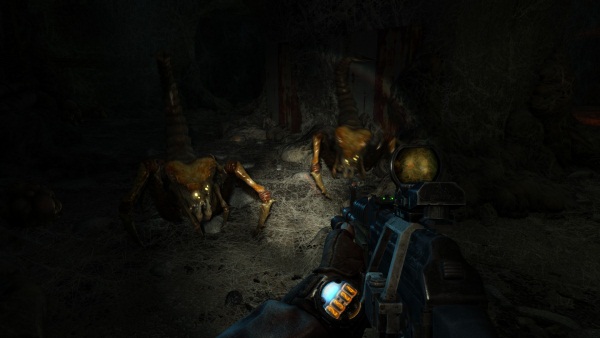
There are also, of course, sections of the game where you’re fighting your fellow man. Usually, you have the option to approach either as a stealthy assassin, or to go in guns blazing. Stealth will force you to utilize darkness to shield yourself from enemy vision. You can shoot out lights, blow out candles, and even shoot pots of boiling water over to put out the fire they’re currently resting over. If you successfully sneak up behind a human enemy, you have the options to do either a lethal or non-lethal takedown; it’s entirely up to you.
While the stealth route is not nearly as deep as something like Dishonored, it’s still quite satisfying and much more interesting than just wandering into a room and shooting up the place. Standard fire-fights are a pretty generic FPS affair, and the enemy AI isn’t particularly intelligent. On a few occasions, I’d watch as an enemy removed himself from cover needlessly, only to do something silly, like get hung up on a piece of the environment.
It should also be noted, that Metro: Last Light is a pretty long game, especially for a shooter. I clocked in at around the 12 hour mark and only died a couple times on my initial play through on normal. On the higher difficulties, you’re more than likely to add a couple more hours to that as well. It’s also a bone crushingly linear experience, there isn’t much in the way of branching paths, but it’s all in service of the story. Though, it still would have been nice to open up the world a bit more to exploration.
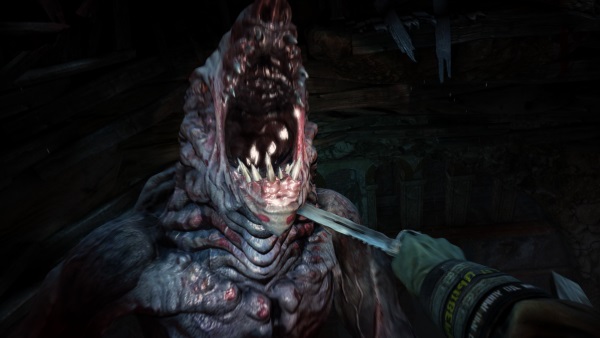
Metro: Last Light is a first person shooter very unlike many of its contemporaries. It’s a game that ignores multiplayer in favour of telling a compelling story, building an interesting world to explore, and baptizes its audience in an overwhelming sense of dread. It features ludicrous amounts of detail and employs the post-apocalyptic theme to a far greater effect than I’ve ever seen in the gaming medium. For those looking for a solid single player, story driven, FPS experience, you’ll be hard pressed to find games as enthralling as Metro: Last Light can be. It’s a worthy successor to Metro 2033 and something survival horror enthusiasts should definitely experience for themselves.
 (8.5 / 10)
(8.5 / 10)
Great
 (8.5 / 10)
(8.5 / 10)

